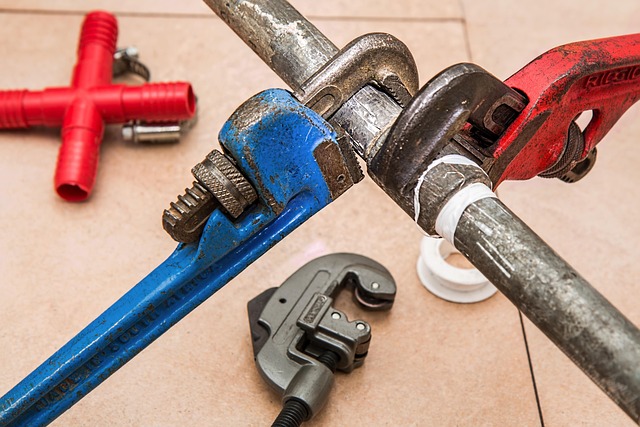Foundation slab cracks are common due to structural issues, soil settlement, and moisture changes, with vertical and horizontal cracks indicating different problems. Proper repair requires identifying crack types, addressing root causes, and using tailored methods like epoxy injection for minor cracks or structural supports for severe cases. Regular inspection is crucial for preventing future damage, with proactive repair offering high return on investment by maintaining property value and structural integrity.
Foundation slab cracks can be a significant concern for any homeowner, leading to structural instability and unsightly appearances. Understanding the common causes and types of these cracks is the first step towards effective repair. This article guides you through the process, from assessing damage to choosing the right repair method, including epoxy injections and structural support. We’ll also explore when to call a professional, long-term maintenance tips, and cost considerations for crack repair.
Understanding Foundation Slab Cracks: Common Causes and Types

Foundation slab cracks can be a common concern for homeowners, but understanding their causes and types is essential for effective crack repair. These cracks often appear due to various factors, including structural issues, settlement of the soil, or changes in moisture levels beneath the slab. One of the most prevalent types is the vertical crack, typically caused by differential settling or shifts in the earth’s surface. Horizontal cracks, while less common, can indicate more severe problems like heave or settlement of the foundation.
Moisture intrusion and freeze-thaw cycles are also significant contributors to slab cracking. Over time, water seepage beneath the slab can lead to expansion and contraction, resulting in cracks. In regions with extreme temperature fluctuations, this process intensifies, causing more severe damage. Identifying the specific type of crack is crucial when addressing foundation repair needs, as it determines the most suitable method for crack repair.
Assessing the Extent of Damage: Crack Size and Structure

When assessing foundation slab repair needs, understanding the extent of damage is crucial. The first step involves inspecting the crack size, as this determines the severity and nature of the problem. Narrow, hairline cracks might be merely cosmetic and indicative of normal concrete shrinkage, while wider cracks could signal structural issues. Their length also matters; shorter cracks are typically less concerning than longer ones that can compromise the overall integrity of the slab.
Additionally, consider the structure surrounding the crack. Is it isolated or part of a network of cracks? The presence of multiple or interconnected cracks often suggests underlying problems like settlement, heave, or soil movement. These factors guide the decision-making process for effective crack repair, ensuring that the chosen method addresses the root cause rather than merely covering up the symptom.
Methods for Repair: From Epoxy Injections to Structural Support

When it comes to foundation slab repair, the methods can vary greatly depending on the extent of damage and the specific needs of the structure. One common and effective approach is epoxy injection, which involves drilling small holes in the cracks and injecting a mixture of epoxy resin and hardener. This process not only fills the crack but also strengthens the surrounding concrete, preventing further damage. Epoxy injections are particularly useful for smaller cracks and hairline fractures.
For more severe cases where structural support is compromised, additional measures may be required. This could include installing steel beams or piers to shore up the foundation and provide the necessary stability. These structural supports can be either temporary or permanent, depending on the assessment of the structural engineer. The goal is always to restore the integrity of the slab, ensuring a safe and stable living or working environment.
Choosing the Right Repair Technique for Your Slab

When it comes to foundation slab repair, selecting the appropriate technique is paramount to ensuring long-lasting results and preventing future damage. The first step involves evaluating the extent of the crack or damage in your slab. Common issues include hairline cracks, large fissures, or even heaving and settling of the concrete. For minor cracks, a simple epoxy injection might be all that’s needed. This method involves drilling into the crack and injecting a two-part epoxy compound, which fills and strengthens it from within.
For more extensive damage, such as significant heaving or large openings, a different approach is required. In these cases, advanced techniques like slab jacking or full replacement might be considered. Slab jacking uses hydraulic pumps to lift and level the slab by injecting high-pressure water beneath it, effectively reducing the size of large gaps. If the damage is severe and structural integrity is compromised, complete replacement may be the most viable option, ensuring a solid and safe foundation for your structure.
The Role of Professionals: When to Call an Expert

When it comes to foundation slab repair, especially for more complex issues like crack repair, professional expertise is invaluable. While minor cracks might be addressed through DIY methods, larger or structural damage requires the skills and knowledge of a trained specialist. These professionals have the tools and technology to assess the situation accurately, identifying any potential risks or underlying causes that could lead to further deterioration.
Calling an expert ensures your foundation slab repair is handled efficiently and effectively. They can provide tailored solutions, from repairing cracks using advanced epoxies to more extensive interventions like underpinning or foundation replacement. Trusting a professional also offers peace of mind, knowing that the job is done right, ensuring the structural integrity of your property for years to come.
Long-Term Maintenance: Preventing Future Cracks

To prevent future cracks and ensure long-term maintenance, regular inspection and prompt action are key. Regularly checking your foundation slab for any signs of damage or stress can help identify potential crack repair needs early on. This proactive approach allows for smaller repairs that can be more easily and cost-effectively managed.
By addressing cracks promptly, you not only prevent them from widening but also avoid the possibility of structural damage to your home. Using suitable materials and techniques for crack repair is essential to ensure durability and longevity. Regular maintenance includes sealing any gaps or openings where moisture could seep in, as well as ensuring proper drainage around the foundation to reduce hydrostatic pressure—a leading cause of slab cracks.
Cost Considerations and Return on Investment

When considering foundation slab repair, cost is a significant factor that cannot be overlooked. The expense of crack repair varies based on several variables, including the extent of damage, size of the cracks, and the complexity of the repair process. Small cracks might only require filling or sealing at a relatively low cost, while larger, structural damages could demand more intensive solutions, such as underpinning or replacement, which are considerably pricier.
Despite the initial investment, repairing foundation slabs offers an excellent return on investment (ROI). Undreated cracks can worsen over time, leading to more severe and costly structural issues. By addressing them early through crack repair methods like epoxy injection or carbon fiber wrapping, homeowners can prevent further damage, extend the life of their foundations, and potentially save thousands in long-term repairs. This proactive approach not only safeguards the property’s value but also ensures a more stable and secure living environment.
